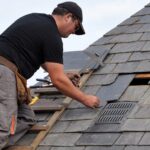Many homeowners often face challenges when considering how to vent a toilet without going through the roof. This can be a significant concern, especially in residential areas where roof alterations might be restricted or in cases where roof penetration could lead to leaks. Fortunately, there are several alternative methods that can be employed to accomplish this task effectively.

Why Venting is Crucial for Your Toilet System
Before delving into the methods of venting without roof involvement, it’s essential to understand why venting is crucial for toilet systems. Venting helps in ensuring:
- Proper disposal of waste.
- Prevention of sewer gases from entering the home.
- Maintenance of water seal in the toilet trap.
Potential Problems with Improper Venting
Improper venting may lead to issues such as clogged drains, sewer gas odors, and inefficient toilet flushing. Understanding these potential problems underscores the importance of considering approved venting methods.
Alternatives to Roof Venting
The Tremendous Role of Air Admittance Valves (AAVs)
AAVs are devices that allow air to enter the plumbing system without needing a vent stack to penetrate the roof. This technology permits air flow while preventing sewer gases from escaping. It is an important consideration when determining how to vent a toilet without going through the roof.
Connecting to an Existing Vent Stack
In many scenarios, connecting your toilet vent to an existing stack that vents another fixture is a viable option. This method is efficient and cost-effective, and it often provides a tremendous benefit in terms of reduced installation time and costs.
Installation Steps and Necessary Tools
Preparation is Key
Before starting, gather all necessary tools such as pipe cutters, PVC pipes, and relevant connectors. Ensuring you have the right materials will save time and enhance the efficiency of the installation process.
Step-by-Step Guide to Installing AAV
- Identify a suitable location for the AAV installation ideally near the toilet.
- Cut the pipe where the AAV will be installed.
- Connect the AAV using appropriate connectors.
- Secure the installation with pipe straps to ensure stability.
Regulations and Best Practices
While considering how to implement these venting alternatives, always check local plumbing codes. Compliance is crucial to ensure the safety and legality of your installation. Furthermore, adherence to best practices can prevent potential issues and delays.
Approved Techniques: Making Informed Decisions
When choosing your method of venting, consider factors such as:
- Ease of access for future maintenance.
- Initial cost vs. long-term benefits.
- Impact on existing plumbing systems.
These considerations can help in making a delighted choice that aligns with your home’s needs.
Conclusion: The Future of Venting Solutions
In conclusion, exploring non-roof venting options opens up a world of possibilities for homeowners. Technology has allowed us to develop innovative solutions that maintain the functionality and safety of our plumbing systems.

Frequently Asked Questions
Can I vent my toilet without a professional?
While possible, it is often recommended to seek professional advice to ensure compliance with local codes and optimal functionality.
What are the costs associated with alternative venting methods?
Costs can vary based on the method chosen and the specific home requirements. It’s advisable to obtain quotes for materials and installation efforts.
Is an Air Admittance Valve safe for venting?
Yes, when installed correctly as per the manufacturer’s instructions, AAVs are safe and efficient for venting toilets.
This article contains affiliate links. We may earn a commission at no extra cost to you.








